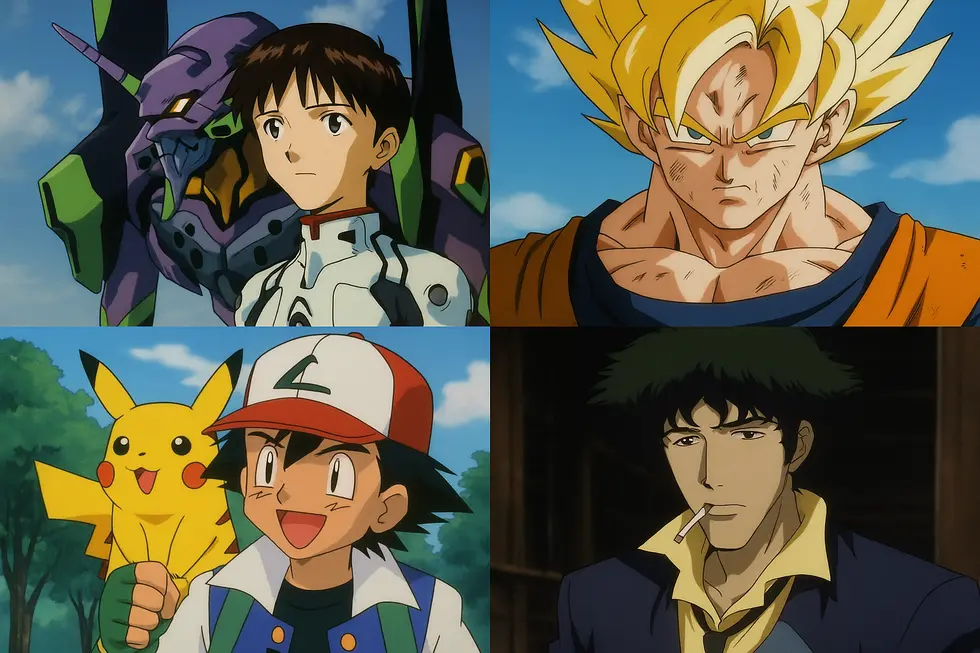Wstęp
Lata 90-te były erą wielkich zmian w świecie anime, które wprowadziły nowe gatunki i zbudowały globalną popularność tego medium. W tym artykule przyjrzymy się dziesięciu kluczowym seriom, które nie tylko zdominowały swoje czasy, ale także wpłynęły na kolejne pokolenia twórców i widzów. Od złożonych tematów of ‘Neon Genesis Evangelion’ po globalny fenomen ‘Pokémon’ – każda z tych serii wniosła coś unikalnego do świata anime.
Spis treści
Neon Genesis Evangelion: Transforming Mecha with Deep Psychological Exploration
- Exploring the Inner Depths: Psychological Complexity in Evangelion’s Mecha Revolution
- Global Influence and Legacy of Neon Genesis Evangelion in the 1990s Mecha Genre Evolution
Global Popularization of Anime through Dragon Ball Z in the 1990s
- The Role of Dragon Ball Z in Mainstreaming Anime as a Global Cultural Phenomenon in the 1990s
- Transformacja Shonen: Dragon Ball Z jako Wzorzec dla Globalnej Publiczności
Sailor Moon and the Evolution of Magical Heroines in the 1990s
- Usagi Tsukino: Transforming the Magical Girl into a Relatable Heroine
- Fusion of Team Heroics and Idol Phenomenon in Sailor Moon’s Magical Girl Revolution
Narrative Depth and Cultural Impact of Yu Yu Hakusho in the 1990s
- Narrative Depth in Yu Yu Hakusho: An Exploration of 1990s Shonen Innovations
- Cultural Impact of Yu Yu Hakusho: Defining 1990s Anime Amidst Global Expansion
Historical and Cultural Reflections in Rurouni Kenshin from the 1990s
- Samurai Ethics and Modernization: Kenshin’s Journey Through Tradition and Change
- Ukazanie Przemian Epoki Meiji w Kulturowych Refleksjach Rurouni Kenshin
Pokémon: A Multimedia Phenomenon of the 1990s
- Technological Innovations and Cultural Impact: How Pokémon Redefined Entertainment
- Gospodarczy Wybuch i Społeczny Wpływ Pokémon: Multimedialny Fenomen lat 90.
Neon Genesis Evangelion: Transforming Mecha with Deep Psychological Exploration

1. Exploring the Inner Depths: Psychological Complexity in Evangelion’s Mecha Revolution
In transforming the mecha genre, Neon Genesis Evangelion introduced psychological complexity previously unseen in anime. It delved beyond the mechanical battles to reveal characters’ fractured psyches and existential dilemmas. This narrative choice not only dismantled traditional heroic tropes but also portrayed mental health issues explicitly, resonating deeply with audiences seeking emotional depth. Through its unconventional storytelling and rich symbolism, Evangelion created a rupture that invited intense analysis and offered more than mere entertainment. Characters like Rei Ayanami redefined archetypes, combining raw emotion and enigmatic presence. This multifaceted approach challenged viewers’ expectations, blending introspection and sci-fi elements into a cohesive and influential cultural artifact.
[1][3][4][5]
2. Global Influence and Legacy of Neon Genesis Evangelion in the 1990s Mecha Genre Evolution
Neon Genesis Evangelion (NGE) redefined the mecha genre in the 1990s by breaking away from traditional tropes and infusing the narrative with complex psychological themes. This series deconstructed the heroic ideals typical of mecha anime, exposing the fragility and psychological turmoil of its characters. It shifted the focus from mere robot battles to deeper explorations of identity, existential angst, and philosophical questions, transforming audience expectations. Internationally, NGE inspired a new wave of anime, influencing creative works across various media. Iconic characters like Rei Ayanami expanded the moe phenomenon, significantly impacting character design and fan culture. Its enduring legacy is seen in the ongoing Rebuild of Evangelion films, reflecting its perpetual significance in anime culture. For an in-depth analysis of its impact, visit The Symbolic World.
Global Popularization of Anime through Dragon Ball Z in the 1990s
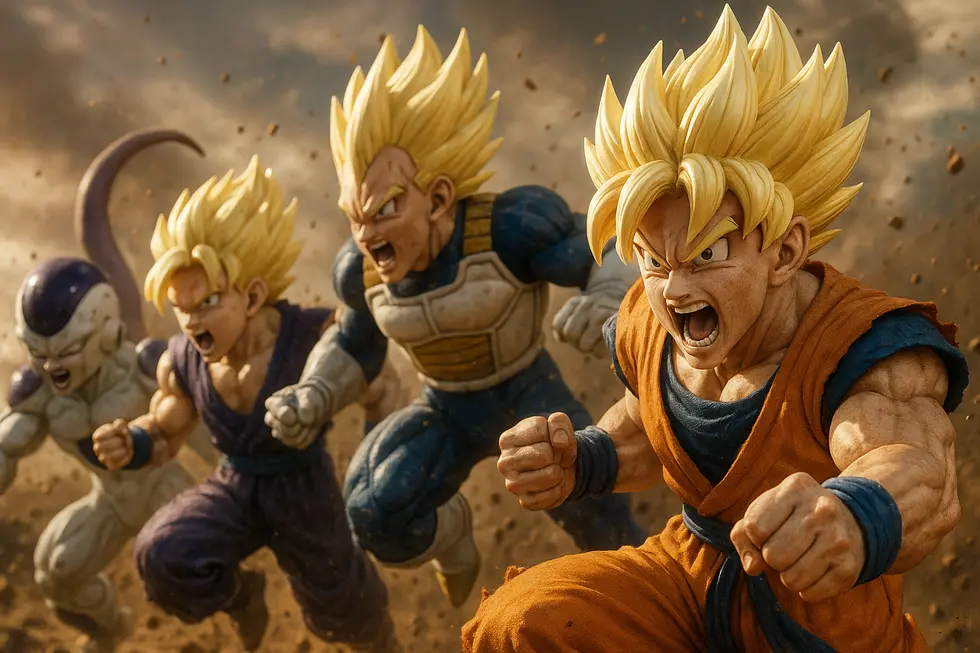
1. The Role of Dragon Ball Z in Mainstreaming Anime as a Global Cultural Phenomenon in the 1990s
Dragon Ball Z undeniably served as a cornerstone in introducing anime to global audiences during the 1990s, transcending cultural barriers and establishing a lasting legacy. With its initial broadcast on Toonami and rapid international dubbing into numerous languages, it gained massive popularity among Western audiences. The series’ intense fight scenes, vibrant characters, and engaging narratives resonated with young viewers, embedding anime as a shared cultural experience across continents. It elevated the shonen genre, encouraging a multitude of similar series to emerge. Despite debates over its narrative pace and animation, Dragon Ball Z’s crucial role as an introductory medium for countless anime fans remains unchallenged. 1
2. Transformacja Shonen: Dragon Ball Z jako Wzorzec dla Globalnej Publiczności
Dragon Ball Z miało ogromny wpływ na standaryzację gatunku shonen oraz dynamicznie rozszerzyło globalną publiczność anime w latach 90. Wprowadziło kluczowe elementy, które stały się charakterystyczne dla shonen, jak intensywne, rozciągnięte bitwy, wyraźna eskalacja mocy poprzez transformacje, takie jak Super Saiyan, oraz tematy wytrwałości i przyjaźni. Ta formuła wpłynęła na późniejsze serie, jak Naruto i Bleach. Dzięki anglojęzycznym wersjom dubbingowym, DBZ zdobyło ogromną popularność w Ameryce Północnej i na Zachodzie, stając się jedną z pierwszych serii anime, które zyskały międzynarodową uwagę. Jako „kamień węgielny” dla shonen, DBZ ukształtowało strukturę narracyjną tego gatunku i odegrało kluczową rolę w globalizowaniu anime. Źródło
Sailor Moon and the Evolution of Magical Heroines in the 1990s
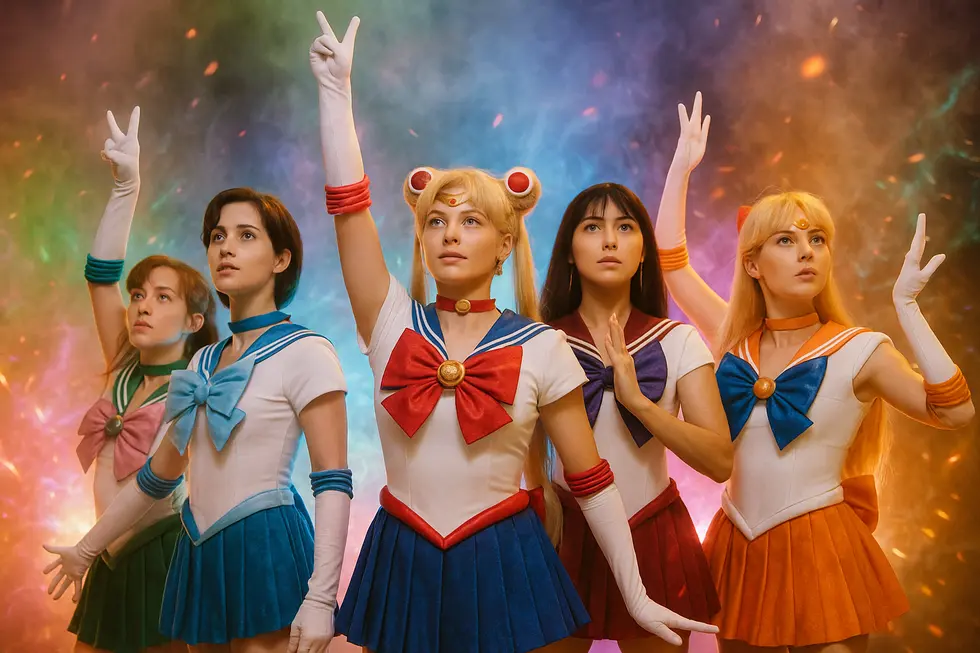
1. Usagi Tsukino: Transforming the Magical Girl into a Relatable Heroine
Usagi Tsukino in Sailor Moon is a transformative figure within the magical girl genre of the 1990s, adding depth to the previously idealized archetype. Unlike her predecessors, Usagi is introduced not as a flawless hero but as a relatable, clumsy teenager embodying both vulnerability and bravery. Her character evolves through a realistic coming-of-age story where her personal growth aligns with larger cosmic themes. Usagi’s journey from an emotional teen to a leader with selfless altruism redefines leadership as rooted in empathy rather than power. Her story intertwines traditional magical elements with themes of romance, action, and science fiction, pushing the boundaries of the genre.
2. Fusion of Team Heroics and Idol Phenomenon in Sailor Moon’s Magical Girl Revolution
The success of Sailor Moon in the 1990s was notably driven by its integration of team dynamics and idol culture, reshaping the magical girl archetype. Unlike the typical lone heroine of earlier series, Sailor Moon united a diverse team of Sailor Scouts, each with unique abilities and personalities. This approach echoed the dynamics of popular idol groups, combining individual strengths to form a compelling, unified team. The inclusion of idol culture was evident in the characters’ transformation sequences and collectible merchandise, from toys to jewelry, mirroring the marketing strategies seen in the idol industry. Consequently, Sailor Moon positioned magical girl protagonists as both formidable heroes and relatable pop icons, expanding their appeal and influencing future series. Learn more about team dynamics in youth groups.
Narrative Depth and Cultural Impact of Yu Yu Hakusho in the 1990s
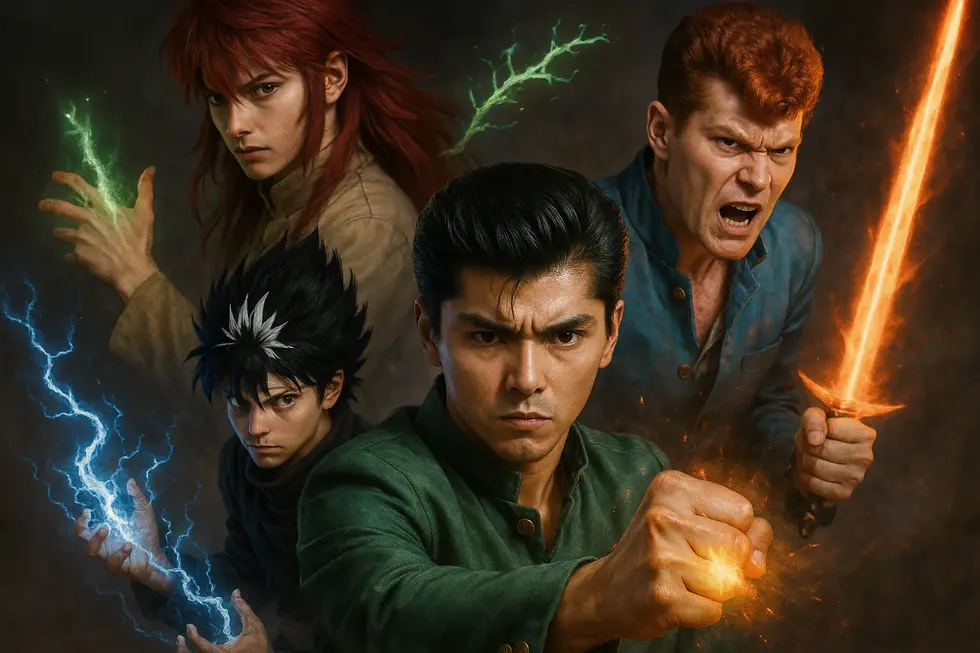
1. Narrative Depth in Yu Yu Hakusho: An Exploration of 1990s Shonen Innovations
Yu Yu Hakusho redefined shonen anime in the 1990s by integrating sophisticated worldbuilding and multi-dimensional narratives. Unlike conventional episodic storytelling, it created an intricate cosmos that revolved around the Human, Spirit, and Demon Worlds. Each realm featured distinct power hierarchies and political intrigue, providing a textured backdrop for character development and plot advancement. Instead of relying on stereotypical villains, the series presented complex antagonists, enriching the narrative and elevating character arcs for Yusuke Urameshi and his allies. This narrative approach set new storytelling standards, influencing successors like Hunter x Hunter. Yu Yu Hakusho’s legacy lies in challenging the genre norms through enriched mythos and character-driven drama, marking it a timeless classic. Read more about its worldbuilding and narrative innovations.
2. Cultural Impact of Yu Yu Hakusho: Defining 1990s Anime Amidst Global Expansion
Yu Yu Hakusho played a pivotal role in the evolution of 1990s anime by redefining the supernatural shonen genre with its intricate worldbuilding and vibrant character dynamics. It expanded anime’s global reach by introducing audiences to a richly layered cosmos comprising the Human, Spirit, and Demon Worlds, each with distinct political systems and hierarchies. This complexity transcended the simple ‘demon of the week’ formula seen in earlier series, marking its place as a seminal work of that era. Achieving immense popularity, it sold over 78 million manga copies by 2022 and aired 112 episodes. Yu Yu Hakusho became a cultural cornerstone in regions such as Western countries and South America, showcasing strong character archetypes like Kurama and Hiei that have influenced subsequent anime narratives. The series not only contributed to the 1990s anime boom alongside classics like Dragon Ball Z but also solidified its enduring legacy as a nostalgic favorite, praised for its dynamic fight scenes and ensemble cast. Read more
Historical and Cultural Reflections in Rurouni Kenshin from the 1990s
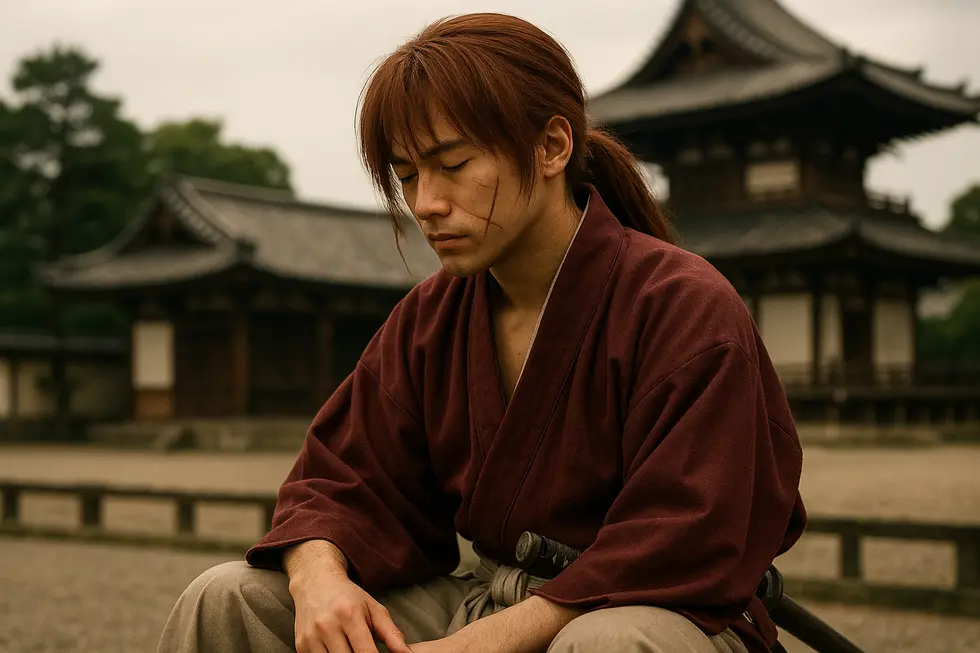
1. Samurai Ethics and Modernization: Kenshin’s Journey Through Tradition and Change
Rurouni Kenshin is a deep exploration of samurai ethics embodied by Kenshin Himura, a former assassin turned pacifist, navigating Japan’s Meiji era transformation. This series poignantly captures the tension between traditional samurai virtues of honor and the march of modernization. Kenshin’s character challenges the monolithic perception of bushidō, embodying a sophisticated blend of Confucian and Zen philosophies. By rejecting violence, he chooses protection over aggression—a modern ethical stance amid societal upheaval. The Meiji era’s context—marked by Westernization and the abolition of samurai status—adds layers to Kenshin’s journey, mirroring a larger cultural negotiation. His story symbolizes the reconciliation of age-old virtues with burgeoning new norms, echoing themes prevalent in Japanese samurai cinema and literature, giving this narrative an enduring impact. Learn more about samurai ethics.
2. Ukazanie Przemian Epoki Meiji w Kulturowych Refleksjach Rurouni Kenshin
W latach 90., Rurouni Kenshin dokonało kunsztownego przedstawienia niezwykle dynamicznego okresu w historii Japonii. Seria skoncentrowała się na okresie przejściowym od ery Tokugawa do nowoczesnej Japonii ery Meiji, ukazując życiowe dylematy Himury Kenshina, byłego zabójcy Battousai. Walka wewnętrzna bohatera — by porzucić przeszłość pełną krwi i występków na rzecz pokoju — odzwierciedlała szerzej zakorzenione zmiany społeczne. Perypetie Kenshina są metaforą napięcia między tradycją a nowoczesnością, z jakim mierzyła się Japonia, gdy samurajskie wartości musiały ustąpić miejsca reformom społecznym i dążeniom do pokoju. Przytoczona epoka, pełna politycznych i społecznych przemian, stanowiła tło do introspekcji nad przeszłością i przyszłością kraju.
Pokémon: A Multimedia Phenomenon of the 1990s

1. Technological Innovations and Cultural Impact: How Pokémon Redefined Entertainment
In the 1990s, Pokémon harnessed the technological prowess of the Nintendo Game Boy to revolutionize multiplayer gaming. Central to this was the Game Link Cable, allowing players to connect two consoles for battles and trades, integral to completing the Pokédex. This innovative feature fostered community engagement, setting Pokémon apart.
Culturally, Pokémon’s impact was immense, sparking the global ‘Pokémania.’ Beyond games, it expanded into a TV series, trading cards, and films, creating a multimedia juggernaut. This approach redefined franchise management, blending technology with cultural resonance, evolving entertainment norms worldwide. Such unprecedented crossover appeal laid the groundwork for future media convergence.
For more insights, explore Pokémon on Wikipedia.
2. Gospodarczy Wybuch i Społeczny Wpływ Pokémon: Multimedialny Fenomen lat 90.
W latach 90. Pokémon nie tylko zrewolucjonizował świat rozrywki, ale także znacząco wpłynął na gospodarkę, szczególnie w kontekście japońskiego okresu stagnacji znanego jako Stracona Dekada. Do marca 1998 roku na rynku dostępnych było około 700 licencjonowanych produktów Pokémon, co obejmowało szeroką gamę towarów – od zabawek po artykuły spożywcze. To intensywne działania marketingowe przyczyniły się do ekonomicznego sukcesu, pozwalając firmom, takim jak Nagatanien, osiągać zyski mimo ogólnokrajowych trudności ekonomicznych[1].
Multimedialna strategia Pokémon objęła również rynek anime i gier wideo, które zdobyły globalną popularność. Pokémon ustanowił nowy standard, łącząc różne media w jednym wszechstronnym fenomenie kulturowym, kształtując kolejne generacje graczy i kolekcjonerów. Ewolucja kart Pokémon jako inwestycji, które przez lata zwiększały swoją wartość, podkreśla trwały kulturowy i ekonomiczny wpływ marki, wykraczający daleko poza lata 90[3].
Podsumowanie
Anime z lat 90-tych nie tylko zyskały popularność, ale też zmieniły sposób, w jaki ludzie na całym świecie postrzegają animacje. Te serie stały się fundamentem dla wielu współczesnych produkcji, inspirując kolejne pokolenia twórców i widzów. Każda z tych klasycznych serii przyczyniła się do ukształtowania młodych ludzi tamtych lat, oferując jedyne w swoim rodzaju historie i światopoglądy, które rezonują do dziś.
Sprawdź ranking i wybierz najlepszą opcję dla swojej rodziny!
O nas
Kreskoweczki.pl to blog o bajkach, anime i filmach animowanych. Piszemy dla fanów kreskówek i nostalgii lat 90.
